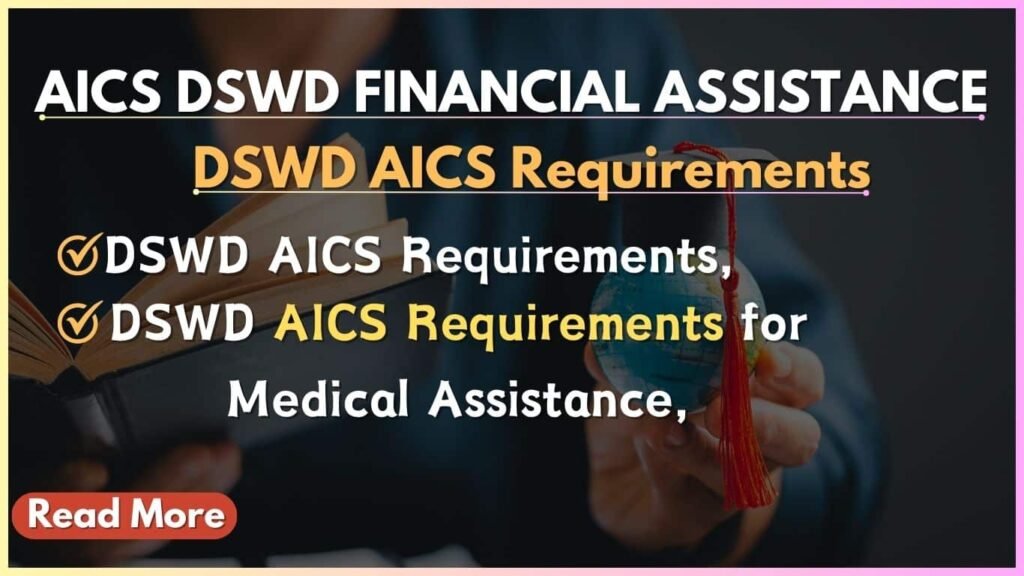KALAHI-CIDSS is also know as Kapit-Bisig Laban sa Kahirapan Comprehensive with is an integrated Delivery of Social Services, know as Philippine Government poverty alleviation Program run by the (DSWD)-Department of Social Welfare and Development.

DSWD Employs the (CDD)-Community Driven Development Strategy, CDD know Globally recognized Strategy for improving service:
- Service Delivery,
- Poverty Reduction and
- Governance.
Kalahi Cidss started in 2003, the Expansion was aproved on January 18, 2013 by the (NEDA) – National Economic Development Authority Board, Led by President Benigno Aquino lll.
Also read – DSWD Educational assistance program
What is (CDD) – Community-Driven Development Approach
Here are the following objectives of CDD – Community-Driven Development:
- Communities in poor municipalities in identifying Challengers related to poverty reduction & Making informed Decisions on variety of locally identified Development Options,
- Communities Provides with Contral over Resources for addressing local poverty.
- Which increase the capacity including local Governments and Civil society Stakeolders to Provide assistance
- Respond to Call for Assistance from poor communities as they implement Development initiatives.
The Goal of Kalahi-CIDSS is to Empower Barangays Communities in Targeted Municipalities to improve their access to services and to be participate in more inclusive Local Planning, Implementation and budgeting.

What are the KALHI-CIDSS Projects?
There are 182 Municipalities were Covered by the KALHI-CIDSS with Additional Financing, Receives Financial Support from the World Bank.
And 164 municipalities Statewide, which including 102 New Municipalities Implementing CDD, received Funding/Grants from the (MCC)-Millennium Challenge Corporation, through the (MCA-P)-Millennium Challenge Account Philippines and at the same time the remaining 62 were Covered Previously by the parent projects.
DSWD planned to Scale up CDD into a Nationwide program, The National Community Driven Development Program in response to a (HDPRC)-High Demand from Partner LGUs communities with the backing of the Human Development and poverty Reduction Cluster(NCDDP).
What are the Goals of KALHI-CIDSS?
- To Empower Communities by treating them not as passive recipents of services and assistance but as a partners in Development.
- To Improve Local Governance by Improving People’s Engagement and access to their LGUs,
- Making more Democratic and Participatory.
- Helps to Reduce Poverty by Implementing Barangay-level Projects that Respond to Communities to help needs and Problems in living.
Objectives
NCDDP is expected to achieve the following Benefits of Communities:
- Access for Better and Basic Services,
- Improving local poverty which indicaing in project Municipalities,
- Which helps increase percentages of Households which help in increasing in knowledge, Skills and Confidennce.
- Helps to Participate in Collectively in Local Governance Activities in Project Municipalities,
- Helps to improve the attendance of Members from marginalized Groups in a Barangay Assemblies.

What are the Principles of DSWD KALAHI-CIDSS projects?
- Localized decision-making
- Empowering
- Transparent
- Community prioritization
- Inclusive and multi-stakeholder
- Demand-driven
- Simple and Sustainable
What are the Vision of KALAHI CIDSS Project?
Overall Community Development Approach used by NCDDP and its Parent Project Kalahi-CIDSS is Community-Driven Development (CDD)
CDD approach to ensures that the Development Priorities are addressed in an inclusive, Participatory and Demand-Driven Manner.
The NCDDP will also support the Operation and expansion of the KALAHI-CIDSS and CDD, this also intergration with the (HDPRC)-Human Development and poverty Reduction Cluster’s, (BUB) – Bottom up planning and Budgeting Process in the selected Municipalities.
NCDDP will implement the Following:
- Based on CDD Institutionalize performance that support for Municipalities that have finished 4 cycles of old and existing KALAHI-CIDSS Municipalities Which have Participated in 4 or more KALAHI-CIDSS FUNDING cycles,
- CDD Operation in existing KALAHI-CIDSS Municipalities and Expand into new Targeted Poor Municipalities.
- Kalahi-CIDSS CDD and LPRAP-BUP process in common municipalities of the NCDDP and HDPRC, for more systematized community participation in local poverty reduction action.
- Institutionalize capacity building and learning on CDD for community volunteers, partner national Government Agencies, LGUs, CSOs and other partners,
- Support integration of the role of provincial LGUs in Bottom Up Planning and Budgeting and CDD, particularly in provinces with high concentrations of NCDDP municipalities and
- Support for the Government’s DSWD convergence of CCT-CDD-Livelihood Conditional Cash Transfer (CCT) Program.
- This supports by providing needed health and education social infrastructure facilities in target CCT areas.
- This enables the Program’s beneficiaries to comply with the requirements of the conditional cash transfer program.
Awards and Recognition
The KALAHI-CIDSS will receive the Following Awards and Recognitions
- 5 Best Practices in project Design among 200 selected Projects WorldWide by World Bank
- Learning laboratory on the Poverty Reduction with the Government officials form the Indonesia, Mongolia and Nepal.
- Conducting Study tuours to KALAHI-CIDSS Municipalities to the Asian Countries.
- Perfect Scorecard as reted by the 92 Non-Government People’s Organizations
- Project’s Engagement with the Civil Society Organizations by the Civil Society 2005
- Presidental Citation for the Project’s Outstanding Contriutions to Proverty Alleviation(2010)
- Good Practice Award form NEDA under the Category of Strategies in Achieving by the Governemt Agencies.
- Desired Sector Outcomes in (2010)
- Best Public Sector Project, awarded by the Regional Council of Wester Visayas in year (2006)

For More information:
For More Information you can visit DSWD KALAHI CIDSS Website form the link https://kalahi.dswd.gov.ph/ Get more information here.
How to Contact DSWD KALAHI-CIDSS
Following are the Contact Details:
Kalahi CIDSS NPMO, DSWD Complex, Batasan Hills, Quezon City
Phone Number : (02) 8952-0697
Facebook Page : https://www.facebook.com/DSWDKALAHICIDSS



